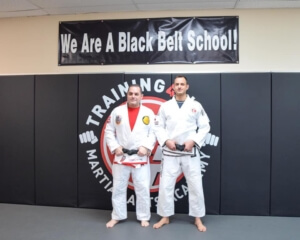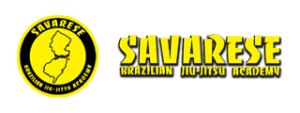The art of showing up to BJJ class
The art of showing up to BJJ class
Written by Savarese BJJ Academy (www.njbjj.com) blackbelt Professor Chris Laciura (www.training4life.com)


Being prepared for trouble in BJJ is a necessary skill. You must always be prepared for any situation that can be problematic. In Jiu-Jitsu we always train ourselves to find the best routes to the best outcomes. However, the reality is that your opponents are doing the same thing and many of those opponents are very talented. As such, it’s always prudent to prepare yourself for trouble, including the worst kinds of trouble. Getting out of fully locked in joint locks is probably the scariest situation in Brazilian Jiu-Jitsu because the price of failure in a competitive match can be a broken limb. Getting the confidence to escape from these scenarios has to begin in the gym. As always, start with lowered pressure so that you can build over time to escape from increasingly tight holds. Make sure your partner understands the difference between extension of a limb and hyperextension, so that they can create a tension that gives realism but no damage if you don’t perform the escape moves quite correctly. Learning to keep a calm mind during a crises is half the battle of extricating yourself. Fear doesn’t make your escapes better, only skill does that. Here one of our Savarese BJJ Academy (www.bergencounty.com), is prepared for the trouble and defends the armlock against her with a skillful escape.
Opportunity and Emotion in BJJ often go hand in hand in Jiu-Jitsu. When opportunity knocks, it’s time to break down the door. In a match against a tough opponent, you may be presented with only one opportunity to make a decisive attack. Whether you do so successfully will come down mostly to two things, your ability to PULL THE TRIGGER when the moment arises and your ability to EXECUTE the move you have selected. The first is more psychological in nature and pertains to your confidence levels. The second is more physical in nature and pertains to your skill level. To shine under pressure you’ll need both to work in harmony. Emotion can be a tricky thing. This game is about decision making and calculating risk and reward. Emotion doesn’t help decision making and calculation. I find most people do their best work in a calm and emotionless state. It’s sometimes difficult to achieve this in the pressure of competition but you don’t have to be perfect,- just better than the other person you are competing against. And often, if you can make your opponent emotional, you can have a great advantage. The time for emotion is after the performance, then you can let out whatever you were holding back! Here, our Savarese BJJ (www.njbjj.com) student Brian lets out some emotion AFTER a big win at the World BJJ Championships.
Base in Jiu-Jitsu. Here at Savarese BJJ Academy (www.northnjbjj.com), standing up in base is literally your first lesson. Whenever you are in standing position or top position it is generally demanded of you to keep a solid base of support that enables you to keep standing or top position as long as you desire it. Intuitively, it feels like the best way to keep a strong base of support is to WIDEN your base as much as possible. This would be true if you were alone and static – but in a match you aren’t – you are constantly moving in response to an opponent. As such width of base is only a part of the story. What you really want is a dynamic base. It will be your ability to maintain base through movement that makes you successful against a resisting opponent. It’s not so much the stationary width of of your base as your ability to step and post to a new base of support in response to second by second changes as the match unfolds. Very often this means taking a rather narrow initial stance so that you can pick up a foot easily and move it, rather than a heavy, exaggerated wide stance that makes it difficult to make a reactionary step in response to an opponents movement. Here, our student Daniela uses a good natural stance to easily pick up a foot and move to a new base of support in response to an opponent trying to off balance her in a recent class.
There are 2 possible reactions to grips in BJJ. First of all, where is his energy going? When you get a grip upon an opponent there two possible reactions. The first is that simply doesn’t react. In this case, go straight into your offensive move and win. By far the common reaction is to resist whatever force you apply to the opponent through your grip. If you pull, the majority of your opponents will pull back. If you push, the majority will push back. Sometimes this reaction manifests itself as movement, sometimes the opponent will be static. It does not matter, in either case there will be an energy in a given direction. Learning to read where your opponents energy is going at any point of time in a match as they react to your grips is one of the most crucial combat skills you can possibly develop. When you can read the direction their energy is going and quickly decide which move to apply that complements that direction, you can defeat opponents with relative ease. Most people decide FIRST what they want to do and get a grip that allows them to do it. That’s fine and works very well in many cases. However, the skillful BJJ practitioners get a grip and push and pull and THEN decide which move they will employ based not upon what THEY want, but rather upon what their opponent offers. Learning to play with this mindset is one of your deepest goals in Jiu-Jitsu and elevates you into the ranks of those skillful practitioners who seem to get more done with less effort. This is not a skill that comes quickly. Initially, just play with the skill of getting a grip and pushing and pulling and feel your opponents reaction every time you grip up. In time, you will learn to smoothly apply a well chosen move to their reaction but you have to start somewhere, so start with the empty minded grip and push/pull. As your repertoire of moves increases, so will your ability to correlate a move to their reaction.
The greatest compliments we could ever receive are the kind words you share with others.
